A Particle Physicist Explains the Tech That Won the Nobel Prize
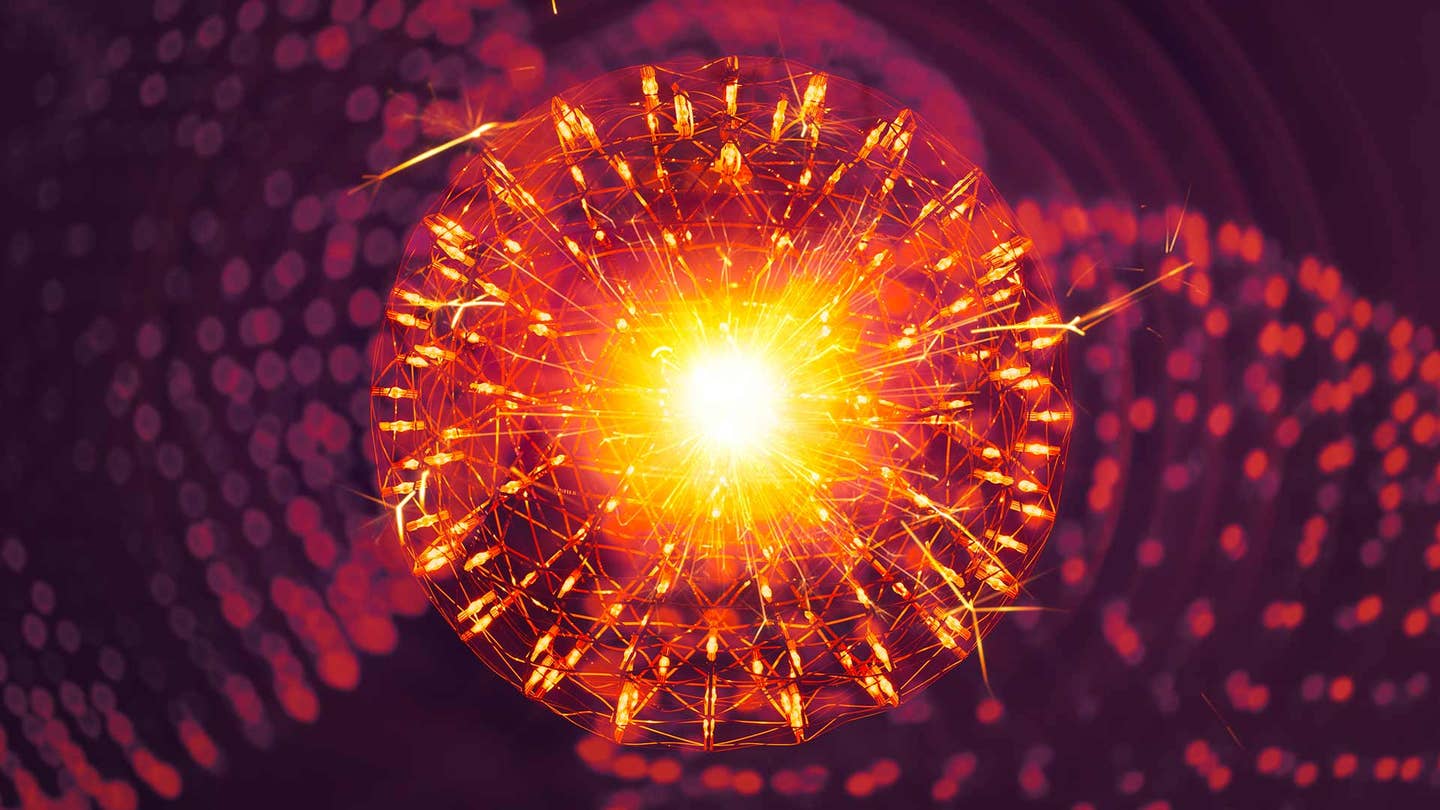
Share
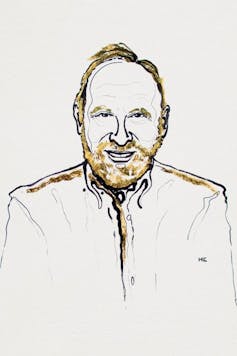
Arthur Ashkin. Niklas Elmehed. © Nobel Media, CC BY-SA
Our world is full of light, and we depend upon it to power life on our planet. So it is appropriate to honor three scientists who invented new ways of using light rays to explore our world.
The 2018 Nobel Prize in physics was awarded to Arthur Ashkin, Gérard Mourou and Donna Strickland for developing tools made from light beams. Ashkin won half of the prize for his work on optical tweezers, which are beams of light that can actually manipulate tiny objects like cells or atoms, while Mourou and Strickland won the other half for creating technology that generates high-intensity, ultra-short laser pulses, which are used for eye surgeries, material sciences, studies of very fast processes and plasma physics, among others.
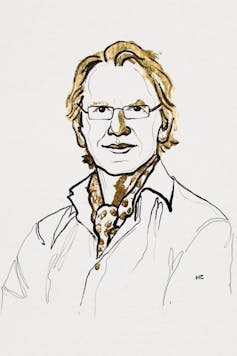
Gerard Mourou. Niklas Elmehed. © Nobel Media, CC BY-SA
Alfred Nobel specified in his will that the physics prize should be awarded for “the most important discovery or invention within the field of physics,” so as a physicist I think he’d be pleased that this year’s award recognizes inventions made in the 1970s and 1980s that have led to practical applications that benefit mankind.
Donna Strickland is only the third woman to win the Nobel Prize in physics, out of 210 recipients, and the first since 1963. Marie Curie was the first, in 1903; she won another one in 1911 for chemistry. Maria Goeppert-Mayer was the second. Hopefully in the future the Nobel Prize committee can lower the average of 60 years between women laureates being named.
What Are Optical Tweezers?
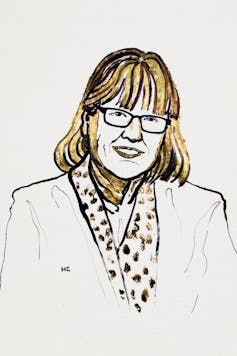
Donna Strickland.Niklas Elmehed. © Nobel Media, CC BY-SA
Using light to manipulate our world has become very important in science and medicine over the past several decades. This year’s physics Nobel recognizes the invention of tools that have facilitated advances in many fields. Optical tweezers use light to hold tiny objects in place or measure their movement. It may seem odd that light can actually hold something in place, but it has been well-known for more than a century that light can apply a force on physical objects through what is known as radiation pressure. In 1969, Arthur Ashkin used lasers to trap and accelerate micron sized objects such as tiny spheres and water droplets. This led to the invention of optical tweezers that use two or more focused laser beams aimed in opposite directions to attract a target particle or cell toward the center of the beams and hold it in place. Each time the particle moves away from the center, it encounters a force pushing it back toward the center.
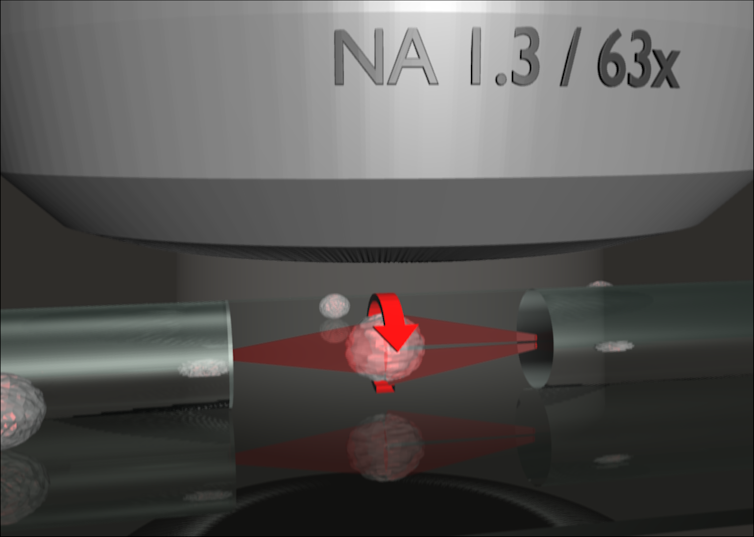
The Optical Cell Rotator uses laser beams from optical fibers to hold living cells in place. The beams can be used to rotate the cells for detailed imaging.
Steven Chu, Claude Cohen-Tannoudji and William D. Phillips won the 1997 Nobel Prize in physics for development of laser cooling traps, known as optical traps, that hold atoms within a confined space. Askhin and Chu worked together at Bell Laboratories in the 1980s laying the foundation for work on optical traps. While Chu continued work with neutral atoms, Ashkin pursued larger, biological targets. In 1987, Ashkin used optical tweezers to examine an individual bacterium without harming the microbe. Now optical tweezers are routinely used in studies of molecules and cells.
Ashkin earned his bachelor’s degree from Columbia University and his Ph.D. from Cornell. He started at Bell Laboratories in 1952 and retired in 1992. But he assembled a home laboratory to continue his scientific investigations. He has been awarded more than 45 patents.
Why Are Fast Laser Pulses Important?
Gerard Mourou and Donna Strickland worked together at the University of Rochester, where they developed the technique called chirped pulse amplification for laser light. Strickland was a graduate student and Mourou was her thesis advisor in the mid-1980s. At the time, progress on creating brighter lasers had slowed. Stronger lasers tended to damage themselves. Strickland and Mourou invented a way to create more intense light, but in short pulses.
You are probably most familiar with laser pointers or barcode scanners, which are just some of the ways we use lasers in everyday life. But these are relatively low-intensity lasers. Many scientific applications need much stronger ones.
To solve this problem, Mourou and Strickland used lasers with very short (ultrashort) pulses, or quick bursts of light separated in time. With chirped pulse amplification, the pulses are stretched in time, making them longer and less intense, and then the pulses are amplified up to a million times. When these pulses are compressed again (through reversing the process used to stretch), the pulses are much more intense than can be created without the chirped pulse amplification technique. As an analogy, consider a thick rubber band. When the band is stretched, the rubber becomes thinner. When it is released, it returns to its original thickness. Now imagine that there is a way to make the stretched rubber band thicker. When the band is released, it will end up thicker than than the original band. This is essentially what happens with the laser pulse.
Be Part of the Future
Sign up to receive top stories about groundbreaking technologies and visionary thinkers from SingularityHub.


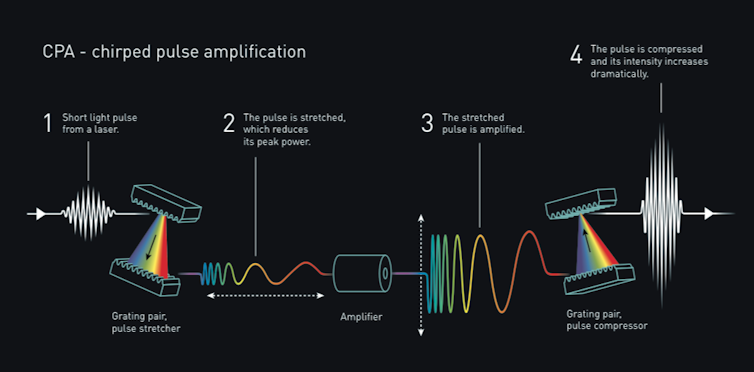
The chirped pulse amplification technique creates extremely intense pulses of light by stretching in time short pulses of light before amplifying them up to a million times. When the pulse is compressed again, it results in pulses that are a million times more intense than the original light. NobelPrize.org, CC BY-SA
There are a variety of ways the stretching and amplification can be done, but nearly all of the highest-power lasers in the world use some variation of this technique. Since the invention of chirped pulse amplification, the maximum intensity of new lasers has continued a dramatic rise.
In my own field of particle physics, chirped pulse amplification-based lasers are used to accelerate beams of particles, possibly providing a path to greater acceleration in a shorter distance. This could lead to lower-cost, high-energy accelerators that can push the bounds of particle physics, enabling us to detect evermore elusive particles and gain a better understanding of the universe.
But not all particle accelerators are behemoths like the Large Hadron Collider, which has a circumference of 17 miles. There are some 30,000 industrial particle accelerators worldwide that are used closer to home for material preparation, cancer treatment and medical research. Mourou and Strickland’s work may be used to shrink the size of these accelerators making them smaller and cheaper.
Ultrafast, high-intensity lasers are also now being used in eye surgery. It can be used to treat the cornea (surface of the eye) to improve vision in some patients. The chirped pulse amplification invention is also used in attosecond science for studying ultrafast processes. An attosecond is one million trillionth of a second. By having lasers that produce pulses every attosecond, we can get a snapshots of extremely fast processes such as atoms losing an electron (ionizing) and then recapturing it.
The Nobel Prize-winning work was the basis for Strickland’s Ph.D. thesis from the University of Rochester. Dr. Strickland is now an associate professor at the University of Waterloo in Canada. Mourou became the founding director of the Center for Ultrafast Optical Science at the University of Michigan in 1990. He later became director of the Laboratorie d’Optique de Applique in France.
The 2018 Nobel Prize in physics shines a light on the pioneering work of these three scientists. Over the past three decades, their inventions have created avenues of science and medical treatments that were previously unattainable. It is certain that we will continue to benefit from their work for a long time.![]()
Todd Adams, Professor of Physics, Florida State University
This article is republished from The Conversation under a Creative Commons license. Read the original article.
Image Credit: Quality Stock Arts / Shutterstock.com
I do research in particle physics, also known as high energy physics. The goal is to understand the most basic particles and forces in nature. I lead the FSU High Energy Physics Group and work on the CMS Experiment at CERN. My focus is on searches for new physics in underexplored parts of the data sets. On CMS, I work on the electromagnetic calorimeter (ECAL), search for long-lived, massive, charged particles, and a search for diphoton resonances in triphoton events. In the past I have worked on the D0 collider experiment at Fermilab, the NuTeV fixed target experiment at Fermilab, and Brookhaven Experiment 852 - a search of exotic mesons. Until April 2019, I also serve as President of the Faculty Senate at FSU. In addition to more than 1,000 refereed journal publications, I have written articles on particle physics and higher education.
Related Articles
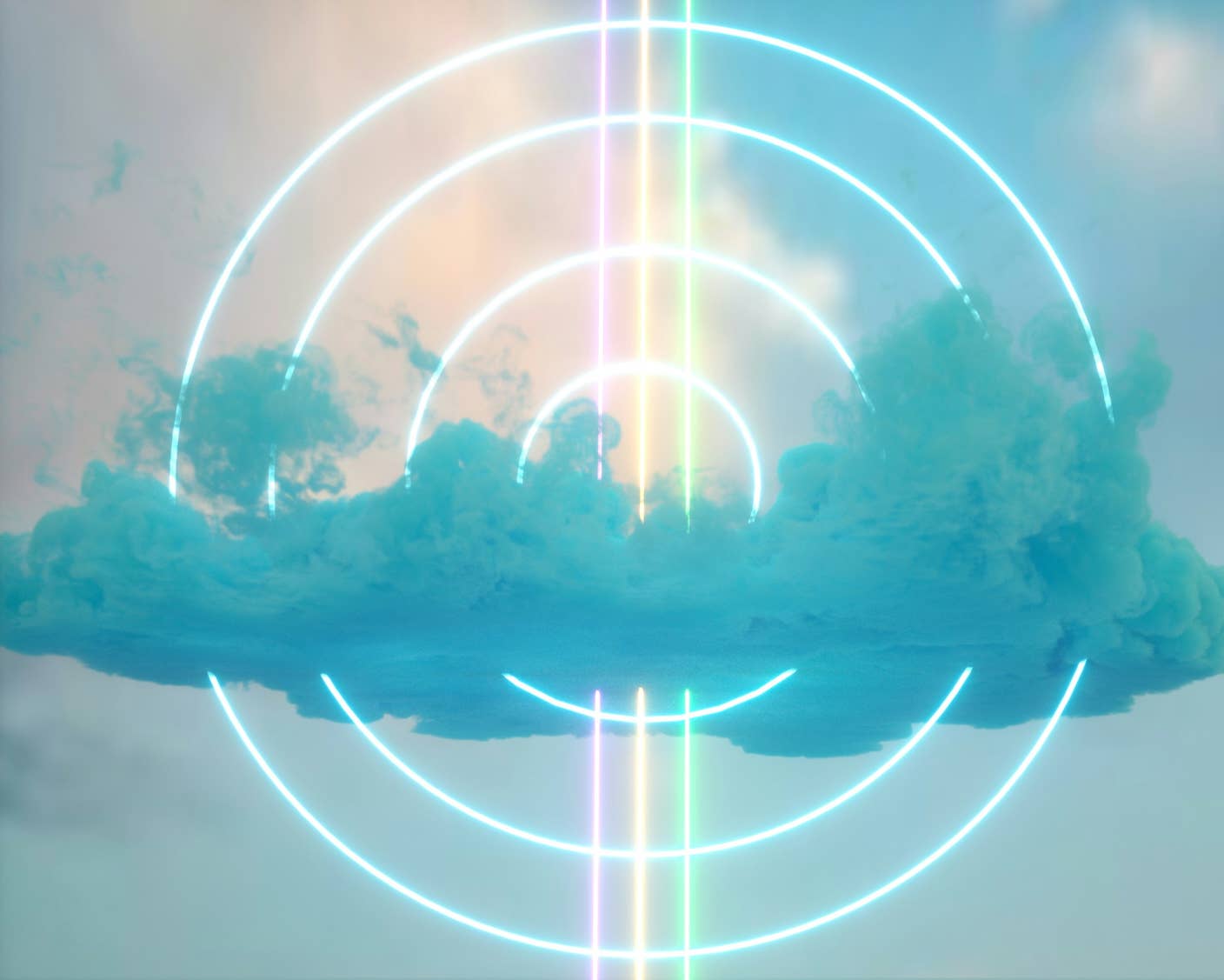
This Week’s Awesome Tech Stories From Around the Web (Through December 13)

New Immune Treatment May Suppress HIV—No Daily Pills Required

How Scientists Are Growing Computers From Human Brain Cells—and Why They Want to Keep Doing It
What we’re reading